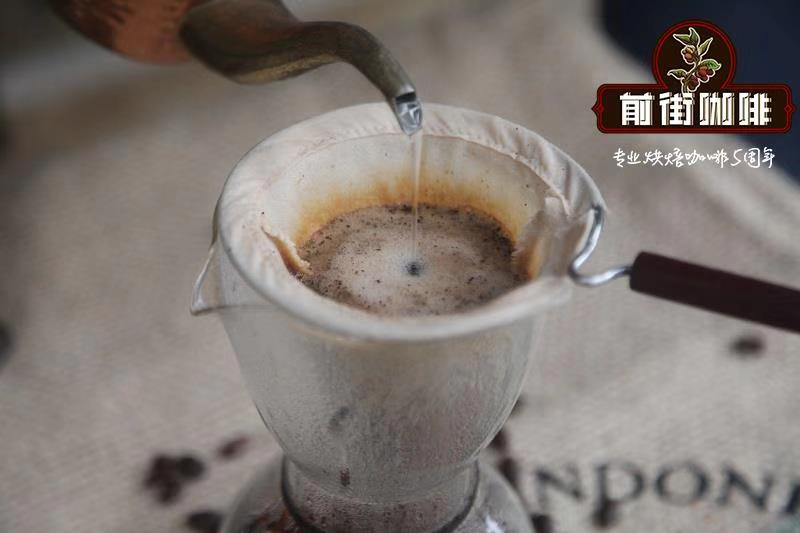What is the flavor and taste of flannel coffee? do you know the characteristics of flannel coffee?

Professional coffee knowledge exchange more coffee bean information please follow the coffee workshop (Wechat official account cafe_style)
Flannel coffee is a kind of coffee with strong history and culture. Seeing the coffee made of flannel feels like tasting the story behind this method of making coffee. The more it tastes, the more it tastes, and you will gradually fall in love with the coffee brewed in this way. Many friends believe that they have never seen this way of brewing coffee, this is a very interesting brewing method, of course, it is also a test of skills.
Why don't you learn about the history of flannel before you taste flannel coffee?
After a taste, you can feel the strong flavor spread all over the body from the tip of the tongue, the aroma of coffee floats in the throat, and the taste gradually wakes up in the beautiful chemistry.
A brief introduction to the history of flannel
Flannel filter cloth originated in Japan, and its brewing method requires constant practice and patience in order to show the purest fragrant smell of coffee, which coincides with the spirit of Japanese craftsmen. There are few records of flannel filter cloth in history, but it is generally believed that it appeared from the end of the 19th century to the beginning of the 20th century.
In the early 17th century, Dutch merchants introduced coffee to Japan, when only one port was opened for trade, and few people knew about the existence of coffee. The coffee industry did not flourish until 1888, when the first tea shop (a teahouse that sells both tea and coffee) opened in Tokyo.
The trend of eating tea shops promotes the maturity of coffee technology, in order to pursue better extraction technology, and then develop many coffee utensils. When the Japanese coffee utensils brand Hario began to launch glass appliances, the brewing method of flannel filter cloth began to become the most fashionable choice.
Flannel flavor taste and characteristics
The process of making flannel coffee is very special. Generally, hand-brewed coffee is brewed with filter paper, while the flannel method is used. Is to use filter cloth. Although unique, but because of the complex cleaning process, coupled with high brewing skills, few people are willing to try. However, the so-called "bitter before sweet", under the flannel bubble method, the hard process will bring a sweet wine-like taste, do not miss it!
Flannel filter cloth because the fiber is thicker than ordinary filter paper, fat will be adsorbed on flannel, so that water and coffee powder have sufficient time to contact, blend, and have a stronger flavor.
Another secret of flannel coffee is that its "soluble solid particles" are smaller than ordinary brewed coffee, so it tastes particularly mellow and smooth.
Flannel can extract all the characteristics of coffee and show a perfect combination of excellent characteristics. Flannel has a larger mesh, softer texture, no pulp flavor, and can retain more oils and other substances in the coffee liquid because of its better permeability; to sum up, the coffee extracted by flannel is more "mellow" and the alcohol is thicker.
Flannel seems to have been eliminated in today's way of making coffee, because it is more difficult to fit in with the current form of work, and many people do not have the patience to wait for such a way of making it. As a result, it has been slowly abandoned by most cafes in the course of development, but some cafes still use this way of making coffee, because waiting slowly is the time for coffee.
END
Important Notice :
前街咖啡 FrontStreet Coffee has moved to new addredd:
FrontStreet Coffee Address: 315,Donghua East Road,GuangZhou
Tel:020 38364473
- Prev

Is Kopi Luwak really cat shit? Description of the flavor and taste of cat poop coffee beans
Professional coffee knowledge exchange more coffee bean information Please pay attention to coffee workshop (Wechat official account cafe_style) Coffee is a kind of crop, the common treatment methods are washing, tanning, honey treatment, etc., the coffee produced by good quality, good flavor, is a very good coffee. But in recent years, there has been a
- Next

Detailed explanation of the steps for making coffee in a siphon pot | what are the characteristics of coffee brewed from a siphon pot?
Professional coffee knowledge exchange more coffee bean information please follow the coffee workshop (Wechat official account cafe_style) siphon pot coffee, is a unique coffee brewing method, siphon pot is also a very challenging brewing apparatus, siphon pot looks very similar to doing chemical experiments, the slightest accident may occur, so siphon pot coffee is suitable for making siphon pot coffee
Related
- Beginners will see the "Coffee pull flower" guide!
- What is the difference between ice blog purified milk and ordinary milk coffee?
- Why is the Philippines the largest producer of crops in Liberia?
- For coffee extraction, should the fine powder be retained?
- How does extracted espresso fill pressed powder? How much strength does it take to press the powder?
- How to make jasmine cold extract coffee? Is the jasmine + latte good?
- Will this little toy really make the coffee taste better? How does Lily Drip affect coffee extraction?
- Will the action of slapping the filter cup also affect coffee extraction?
- What's the difference between powder-to-water ratio and powder-to-liquid ratio?
- What is the Ethiopian local species? What does it have to do with Heirloom native species?

